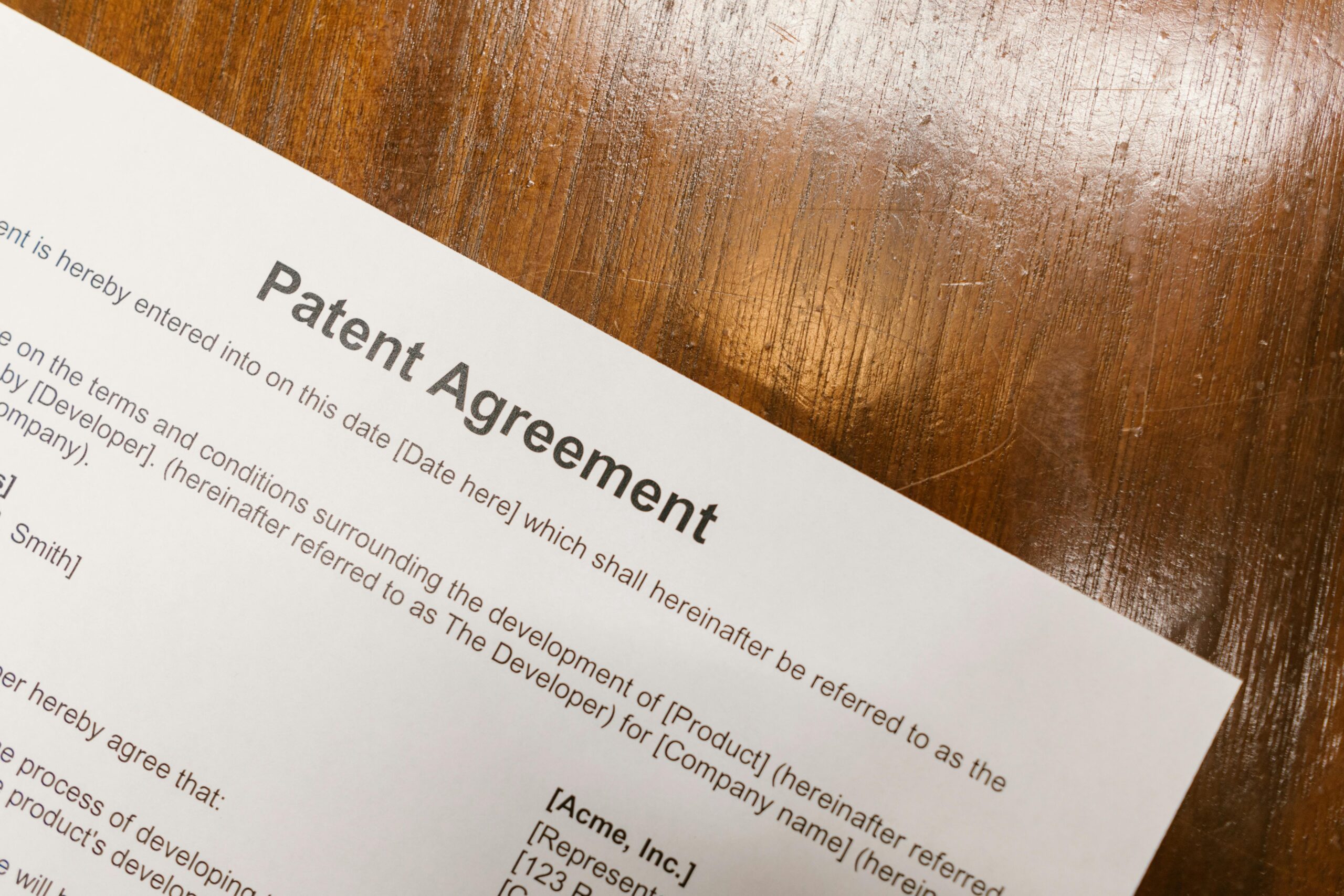Asset Purchase vs. Stock Purchase in M&A:
Complete 2025 Guide for Buyers & Sellers
The choice of either an asset purchase or stock purchase for your M&A transaction can mean the difference between a successful acquisition and a costly mistake. This decision affects everything from tax liability and risk exposure to operational continuity and deal complexity.
Whether you’re buying your first company or selling a business you’ve built over decades, understanding these transaction structures is crucial for protecting your interests and maximizing value. In this article, we’ll break down everything you need to know about asset purchases versus stock purchases for transactions in 2025 and beyond.
Table of Contents
- Quick Overview: Asset vs. Stock Purchase
- Asset Purchase Deep Dive
- Stock Purchase Deep Dive
- 2025 Tax Implications & Changes
- Liability & Risk Considerations
- Due Diligence Requirements
- Decision Framework: Which Structure to Choose
- Expert Recommendations
Quick Overview: Asset vs. Stock Purchase
Asset Purchase
What it is: Buyer selects and purchases specific assets and assumes specific liabilities
Best for: Buyers seeking liability protection and tax benefits
Key advantage: Stepped-up tax basis allowing higher depreciation deductions
Main drawback: Complex transfer process and potential contract renegotiation
Stock Purchase
What it is: Buyer purchases ownership shares, acquiring the entire legal entity
Best for: Sellers seeking clean exit and buyers wanting operational continuity
Key advantage: Sellers often qualify for favorable capital gains tax treatment
Main drawback: Buyer inherits all known and unknown liabilities
Asset Purchase: Complete Analysis
In an asset purchase, the buyer cherry picks which assets to acquire and which liabilities to assume. This selectivity makes asset purchases particularly attractive to buyers, but the complexity can be significant.
Strategic Advantages for Buyers
1. Liability Protection
The primary advantage of asset purchases is liability insulation. Buyers can avoid:
- Legacy litigation and claims
- Environmental liabilities from past operations
- Employee-related obligations (with some exceptions)
- Unknown tax liabilities
- Product liability claims from pre-acquisition sales
⚠️ Important Exception: Some liabilities follow assets regardless of structure, including certain environmental obligations, successor liability for unpaid wages, and tax liens on specific assets.
2. Tax Benefits: Stepped-Up Basis
Asset purchases allow buyers to “step up” the tax basis of acquired assets to reflect the purchase price, resulting in bigger depreciation and amortization deductions. This can provide substantial tax savings over time:
- Equipment & Machinery: Higher basis = greater annual depreciation
- Intangible Assets: Customer lists, goodwill, and IP can be amortized from stepped-up values
- Real Estate: Buildings and improvements get new depreciation schedules
3. Operational Flexibility
Asset purchases offer strategic flexibility:
- Acquire only profitable business lines
- Leave behind underperforming assets
- Avoid assuming unwanted contracts
- Exclude geographic territories or customer segments
Challenges and Complexities
1. Transfer Requirements
Every asset must be individually transferred, creating administrative burden:
- Real Estate: Deeds, title transfers, and recording fees
- Contracts: Assignment agreements and third-party consents
- Intellectual Property: USPTO filings and trademark assignments
- Licenses & Permits: New applications or transfer requests
- Equipment: Bills of sale and lien releases
2. Third-Party Consent Requirements
Many contracts contain change-of-control provisions requiring consent for assignment:
- Key customer agreements
- Supplier contracts
- Real estate leases
- Equipment financing agreements
- Software licenses
💡 Pro Tip: Start the consent process early in due diligence. Some consents can take 60-90 days to obtain, and a “no” from a key vendor can derail the entire transaction.
Seller Considerations for Asset Sales
Tax Implications for Sellers
The tax impact on sellers varies significantly by entity structure:
- C-Corporations: Face potential double taxation—corporate level tax on sale plus individual tax when proceeds are distributed
- S-Corporations & LLCs: Pass-through taxation avoids double taxation issue
- Depreciation Recapture: Asset sales may trigger ordinary income treatment on depreciated assets rather than capital gains rates
Post-Sale Obligations
Sellers often retain:
- Liabilities not assumed by buyer
- Wind-down obligations for remaining entity
- Ongoing indemnification responsibilities
- Tax compliance for pre-sale periods
Stock Purchase: Complete Analysis
Stock purchases involve buying ownership interests in the target company, with the legal entity continuing unchanged. This structure offers simplicity but requires careful risk assessment.
Strategic Advantages for Buyers
1. Operational Continuity
The target company continues operating without interruption:
- All contracts remain in effect automatically
- Licenses and permits stay with the entity
- Customer relationships are preserved
- Employee agreements continue unchanged
- Banking relationships and credit facilities typically remain
2. Simplified Transaction Process
Stock purchases are generally faster and less complex:
- Single Asset: Only stock certificates change hands
- No Individual Transfers: Assets remain with the entity
- Minimal Third-Party Consents: Only triggered by specific change-of-control clauses
- Preserved Relationships: Banking, insurance, and vendor relationships typically continue
3. Regulatory Advantages
In regulated industries, stock purchases often avoid re-licensing requirements:
- Professional service licenses remain valid
- Industry-specific permits continue
- Government contracts may transfer automatically
- Regulatory approvals typically aren’t required
Risks and Challenges for Buyers
1. Comprehensive Liability Assumption
Buyers inherit ALL liabilities, including:
- Known Liabilities: Disclosed debts, contracts, and obligations
- Unknown Liabilities: Undisclosed claims, tax issues, and environmental problems
- Contingent Liabilities: Warranties, guarantees, and potential litigation
- Successor Liability: Claims that may arise after closing
2. Tax Basis Limitations
In stock purchases, buyers generally don’t get the benefit of stepped-up tax basis, inheriting the target company’s existing depreciation methods and asset bases. However, buyers can make a Section 338 election to treat the stock purchase as an asset purchase for tax purposes, though this requires careful analysis and seller cooperation.
Seller Advantages in Stock Sales
1. Tax Efficiency
Stock sales generally provide sellers with capital gains treatment and avoid the double taxation issues that C-corporations face in asset sales. Benefits include:
- Lower capital gains tax rates versus ordinary income rates
- Single layer of taxation (no corporate-level tax)
- Potential for installment sale treatment
- Possible Section 1202 qualified small business stock benefits
2. Clean Exit
Sellers achieve a complete separation from the business:
- No retained liabilities (except for specific indemnifications)
- No ongoing business operations
- Simplified post-closing obligations
- Clear transfer of all responsibilities to buyer
2025 Tax Implications & Recent Changes
Tax considerations often drive deal structure decisions. Here’s what’s changed and what to watch in 2025:
Current Federal Tax Environment
Key 2025 Tax Rates
- Capital Gains (Long-term): 0%, 15%, or 20% depending on income
- Ordinary Income (Top Rate): 37% for individuals
- Corporate Tax Rate: 21% flat rate
- Net Investment Income Tax: Additional 3.8% on investment income over thresholds
Asset Purchase Tax Planning
Purchase Price Allocation
Buyers must allocate the purchase price among acquired assets, with each asset receiving a tax basis equal to its allocated portion. Strategic allocation can maximize tax benefits:
- Tangible Assets: Allocate to assets with shorter depreciation lives
- Intangible Assets: Customer lists (15-year amortization) vs. goodwill (15-year)
- Inventory: Immediate deduction when sold
- Section 179 Property: Potential for immediate expensing
Depreciation Recapture for Sellers
Sellers must recognize ordinary income on depreciated assets to the extent of prior depreciation taken. This can significantly impact the tax efficiency of asset sales.
Stock Purchase Tax Considerations
Section 338 Elections
Buyers can elect to treat a stock purchase as an asset purchase for tax purposes, gaining stepped-up basis benefits. However:
- Requires 80% stock acquisition within 12 months
- Must be made within 8.5 months after acquisition
- Can trigger significant tax liability for target company
- Often requires seller cooperation or compensation
Section 1202 Qualified Small Business Stock
Individual sellers may exclude up to $10 million or 10x basis (whichever is greater) of gain from federal taxes if:
- Stock was held for at least 5 years
- Company qualifies as a small business (under $50M assets when stock issued)
- Company conducts qualifying business activities
Liability & Risk Assessment Framework
Understanding liability allocation is crucial for both buyers and sellers in choosing transaction structure.
Buyer Liability Analysis
Asset Purchase Liability Protection
While asset purchases generally provide better liability protection, exceptions exist:
Liabilities That May Transfer Despite Asset Structure
- Environmental: CERCLA liability can follow contaminated assets
- Employment: WARN Act notice requirements and certain benefit obligations
- Tax Liens: IRS and state tax liens on specific assets
- Product Liability: Some states impose successor liability for defective products
- Bulk Sales: State laws may protect creditors in asset sales
Stock Purchase Risk Mitigation
Buyers can manage liability risks in stock purchases through:
- Comprehensive Due Diligence: Thorough review of potential liabilities
- Representations & Warranties: Contractual protections from seller
- Indemnification: Post-closing protection for specific risks
- Insurance: Representations & warranties insurance
- Escrow Arrangements: Funds held back to secure indemnification
Industry-Specific Considerations
Manufacturing & Industrial
- Environmental Liability: Soil contamination, regulatory compliance
- Product Liability: Historical product defects and recalls
- Worker Safety: OSHA violations and workers’ compensation claims
Healthcare & Professional Services
- Licensing Requirements: Professional licenses may not transfer in asset sales
- Malpractice Liability: Claims for services provided pre-acquisition
- Regulatory Compliance: HIPAA, state professional regulations
Technology Companies
- IP Ownership: Patent validity, trademark rights, copyright issues
- Data Privacy: GDPR, CCPA, and other privacy regulation compliance
- Contract Liability: SaaS agreements, licensing arrangements
Due Diligence Requirements by Structure
The transaction structure significantly impacts due diligence scope and focus.
Asset Purchase Due Diligence
Asset-Specific Review
- Asset Ownership: Clear title to all assets being purchased
- Liens & Encumbrances: UCC searches, property records, equipment financing
- Asset Condition: Physical inspection, appraisals, useful life analysis
- Transfer Requirements: Third-party consents, regulatory approvals
Assumed Liability Analysis
- Contract Review: Which contracts will buyer assume?
- Employee Obligations: Which employees and what benefits transfer?
- Regulatory Compliance: Environmental, safety, industry-specific requirements
Stock Purchase Due Diligence
Comprehensive Business Review
Stock purchases require complete company analysis:
- Corporate Records: Articles, bylaws, board minutes, stock records
- Financial Statements: Audited financials, tax returns, accounting policies
- Legal Compliance: All contracts, litigation, regulatory matters
- Employment Matters: All employee agreements, benefit plans, labor relations
- Intellectual Property: Complete IP portfolio review
- Insurance Coverage: All policies, claims history, coverage gaps
Hidden Liability Investigation
- Litigation Search: Federal and state court records
- Regulatory Investigations: EPA, OSHA, industry-specific agencies
- Tax Compliance: IRS audits, state tax issues, payroll tax compliance
- Environmental Assessment: Phase I/II environmental studies if applicable
✅ Expert Tip: In stock purchases, budget 30-50% more time and cost for due diligence compared to asset purchases. The comprehensive review is essential given the liability assumption.
Decision Framework: Which Structure to Choose
Use this framework to evaluate the optimal transaction structure for your specific situation:
Choose Asset Purchase When:
Buyer Priorities
- Liability protection is paramount
- Tax benefits (stepped-up basis) are valuable
- Only specific business segments are desired
- Target has significant environmental or litigation risks
- Buyer has strong M&A execution capabilities
Deal Characteristics
- Few critical contracts requiring consent
- Assets are easily transferable
- Limited regulatory licenses involved
- Seller is motivated by other factors beyond tax efficiency
Choose Stock Purchase When:
Seller Priorities
- Tax efficiency is critical (capital gains treatment)
- Clean exit without retained liabilities
- Minimize transaction complexity and timeline
- Seller is C-corporation facing double taxation in asset sale
Deal Characteristics
- Strong due diligence reveals limited liability risks
- Business depends on contracts that can’t be easily assigned
- Regulated industry where licenses are valuable
- Customer relationships are relationship-dependent
- Speed to closing is important
Key Questions to Guide Your Decision
- Risk Tolerance: How much unknown liability can the buyer accept?
- Tax Impact: What’s the net tax difference between structures?
- Operational Needs: Are contracts and licenses easily transferable?
- Timeline: How quickly does the transaction need to close?
- Financing: Do lenders have structure preferences?
- Regulatory Environment: Are there industry-specific considerations?
Expert Recommendations & Best Practices
📋 Pre-Transaction Planning
For Sellers (Plan 12-18 Months Ahead)
- Clean Up Corporate Records: Ensure all filings are current and complete
- Resolve Outstanding Issues: Address litigation, tax matters, and compliance gaps
- Structure Planning: Consider entity conversions or reorganizations for tax efficiency
- Documentation Review: Update employee agreements, IP assignments, and contracts
For Buyers (Before LOI)
- Financing Considerations: Understand lender preferences on deal structure
- Tax Analysis: Model the tax impact of both structures
- Integration Planning: Consider post-closing operational needs
- Risk Assessment: Evaluate industry-specific liability risks
During Transaction Execution
Asset Purchase Best Practices
- Parallel Processing: Start consent requests early in due diligence
- Asset Scheduling: Create detailed schedules with buyer/seller review
- Title Review: Conduct comprehensive title and lien searches
- Regulatory Planning: Identify all required approvals and licenses
Stock Purchase Best Practices
- Enhanced Due Diligence: Allocate sufficient time and resources
- Insurance Planning: Consider representations & warranties coverage
- Indemnification Structure: Carefully negotiate survival periods and caps
- Post-Closing Integration: Plan for cultural and operational integration
Common Pitfalls to Avoid
⚠️ Critical Mistakes
- Structure Decided Too Late: Don’t wait until LOI to consider structure implications
- Insufficient Due Diligence: Especially dangerous in stock purchases
- Overlooking State Law Differences: Successor liability varies by jurisdiction
- Ignoring Tax Elections: Missing Section 338 election deadlines or benefits
- Poor Purchase Price Allocation: In asset deals, inefficient allocation reduces tax benefits
- Inadequate Consent Planning: Underestimating time needed for third-party approvals
- Weak Indemnification: Insufficient protection in stock purchases
Oklahoma-Specific Considerations
Oklahoma law has several unique aspects that affect M&A transaction structuring:
State Tax Implications
- Oklahoma Corporate Income Tax: 6% rate may favor stock structures for C-corporations
- Franchise Tax: Oklahoma has no franchise tax, reducing ongoing costs
- Sales Tax on Asset Transfers: Consider sales tax implications on tangible asset transfers
- Apportionment Rules: Multi-state businesses should consider Oklahoma’s apportionment factors
Regulatory Environment
- Business Registration: Asset purchases may require new Oklahoma business registrations
- License Transfers: Professional licenses and industry-specific permits have varying transfer rules
- Employment Law: Oklahoma is an at-will employment state with specific wage and hour requirements
2025 Market Trends & Outlook
Current M&A market conditions are influencing structure preferences:
Buyer Market Dynamics
- Increased Due Diligence: Buyers are conducting more thorough reviews, favoring asset purchases
- Financing Constraints: Lenders increasingly prefer asset structures for leverage lending
- ESG Concerns: Environmental and governance risks driving preference for asset purchases
Seller Adaptations
- Structure Flexibility: Sellers increasingly willing to consider asset sales with proper tax planning
- Clean-Up Activities: More pre-sale preparation to make stock purchases viable
- Insurance Solutions: Greater use of representations & warranties insurance
Advanced Structuring Techniques
Hybrid Structures
Reverse Triangular Mergers
Combines benefits of both structures:
- Target company survives (preserving contracts and licenses)
- Buyer avoids direct liability assumption
- Seller achieves stock sale tax treatment
- More complex but often optimal for larger transactions
Forward Triangular Mergers
Useful when operational simplification is important:
- Target merges into buyer subsidiary
- Simplifies post-closing integration
- May trigger contract consent requirements
Tax-Optimized Structures
Section 368 Reorganizations
Tax-deferred transactions that can benefit both parties:
- Type A: Statutory mergers
- Type B: Stock-for-stock exchanges
- Type C: Asset-for-stock transactions
Installment Sales
Spread tax liability over time:
- Available for both asset and stock sales
- Requires careful structuring to avoid imputed interest rules
- Consider depreciation recapture timing in asset sales
Post-Closing Considerations
Integration Planning
Asset Purchase Integration
- System Integration: Migrate acquired assets to buyer’s systems
- Employee Transition: Onboard transferred employees to buyer’s practices
- Contract Management: Ensure all assigned contracts are properly managed
- Regulatory Compliance: Maintain compliance with all applicable regulations
Stock Purchase Integration
- Cultural Integration: Blend target company culture with buyer’s
- Operational Alignment: Standardize processes while preserving value
- Financial Reporting: Integrate target’s financials into buyer’s systems
- Governance Structure: Establish appropriate board and management oversight
Ongoing Compliance
- Tax Filings: Ensure proper allocation reporting and ongoing compliance
- Regulatory Notifications: File required change-of-control notifications
- Contract Performance: Monitor performance under assigned or assumed contracts
- Employment Compliance: Maintain compliance with employment law requirements
When to Seek Professional Guidance
M&A transactions involve complex legal, tax, and business considerations that require experienced counsel. Consider professional guidance when:
- Transaction Value: Deals over $500,000 typically warrant professional assistance
- Complex or Multiple Assets: Intellectual property, real estate, or numerous assets are involved
- Multi-State Operations: Transactions involving multiple jurisdictions
- Significant Liabilities: Environmental, litigation, or regulatory exposure
- Tax Complexity: C-corporation sellers or complex tax structures
- Financing Involved: SBA loans, private equity, or complex financing structures
🚀 Ready to Structure Your M&A Transaction?
Get expert guidance tailored to your specific deal objectives.
We’ve guided hundreds of M&A transactions, helping clients choose optimal structures that maximize value while minimizing risk. Our comprehensive approach includes:
- Structure analysis and recommendation
- Tax optimization strategies
- Due diligence management
- Transaction documentation and negotiation
- Post-closing integration support
Confidential consultation • Same-day response • M&A transaction experts
Frequently Asked Questions
-
Can we change transaction structure after signing the LOI?
While possible, changing structure after LOI is complex and may require renegotiating key terms. It’s best to determine structure before signing any binding agreements.
How long do M&A transactions typically take?
Asset purchases typically take 4-6 months, while stock purchases often close in 2-4 months. Complex transactions or regulatory approvals can extend these timelines.
What happens if a key customer refuses consent in an asset purchase?
Options include: negotiating alternative terms, carving the contract out of the deal, or converting to a stock purchase structure. Planning for this scenario during due diligence is crucial.
Are there minimum thresholds for different transaction structures?
No legal minimums exist, but practical considerations make asset purchases less cost-effective for smaller transactions due to complexity and professional fees.
How do we handle employees in asset purchases?
Buyers typically make individual offers to desired employees. Certain employment obligations may transfer by operation of law, requiring careful analysis of applicable statutes.
What insurance should we consider for M&A transactions?
Key policies include representations & warranties insurance, directors & officers coverage, and transaction-specific liability insurance. The structure influences which coverages are most important.
Conclusion
The choice between asset purchase and stock purchase structures significantly impacts every aspect of your M&A transaction—from tax liability and risk exposure to operational continuity and closing timeline. Neither structure is universally superior; the optimal choice depends on your specific circumstances, objectives, and risk tolerance.
Successful M&A transactions require careful analysis of these factors early in the process, comprehensive due diligence appropriate to the chosen structure, and experienced legal counsel to navigate the complexities involved. With proper planning and professional guidance, you can structure your transaction to achieve your business objectives while minimizing risks and maximizing value.
Disclaimer: This article provides general information about M&A transaction structures and should not be considered legal or tax advice. M&A law is complex and varies by jurisdiction. Each transaction involves unique circumstances requiring personalized analysis. For guidance specific to your situation, consult with experienced M&A attorneys and tax professionals.
About Cantrell Law Firm: We’re Oklahoma business attorneys with extensive M&A experience, having guided transactions ranging from small business acquisitions to complex multi-million dollar deals. Our practical approach helps clients achieve their business objectives while protecting their interests throughout the transaction process. Contact us to discuss your M&A needs.





